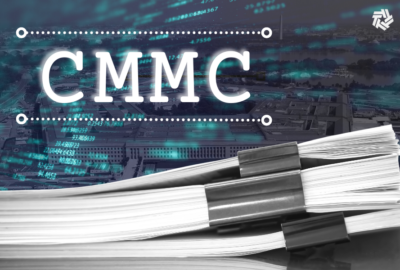Sponsored by T-Mobile
DHS Science and Technology Directorate looks to the evolution of first responder communications
New realities of emergency work for emergency responders has necessitated increased use of data transmission of live incident video and file sharing.
The Department of Homeland Security Science and Technology Directorate is developing new strategies to guarantee network reliability and security for first responders. Voice has always been the mainstay of first responder communications. New realities of emergency work for police, fire and agencies like FEMA have necessitated increased use of data transmission of live incident video, images and other types of file sharing. DHS S&T is working with partners to develop the next generation of emergency communications.
Sridhar Kowdley, a program manager at a DHS S&T Research and Development tech center explains that the goal is to save people, property and complete the mission at the actual edge of the network. That challenges the directorate to be creative, and those challenges showed up when they worked with Customs and Border Protection to provide new functions and increased ways to collect critical information.
“A lot of times these border patrol agents leave their cars, and then they’re not connected for five hours, so they’re essentially out of pocket … A young Border Patrol agent who just joined said we’ve got a lot of ultra lights flying into the country. We want to be able to get tail numbers. We want to get images of it. We want to know where they’ve been, where we saw them,” Kowdley said on Federal Monthly Insights — The Future of 5G for DoD and Critical Infrastructure Organizations.
Kowdley explains that 3G, 4G and 5G can all push data, but while researchers understand that traditional LMR (Land Mobile Radio) is still reliable, they operate on low bandwidth that primarily carry voice and limited data. So researchers understand that they can’t just rely on one single network. There is a need to be flexible and resilient, and for high frequency.
He recognized the efforts of the Cybersecurity and Infrastructure Security Agency for their work on something they call “wireless priority services.” CISA is working with carriers on quality of service and key performance metrics. CISA has also been running field tests, including one on the National Mall on the Fourth of July. They invited the main carriers into the test to look at video streaming performance, to get data and feedback and to have the opportunity to improve their work for public safety.
“We have something called ruthless preemption. Before that, I couldn’t interrupt you if the channels were busy, but I would get first shot when a channel opened up with wireless priority services. Now they’ve actually gotten to the point where they could ratchet down the public like someone who’s streaming, and give priority to either fire or law enforcement, or medical services. They can give them the bandwidth they need to do their work,” Kowdley told The Federal Drive with Tom Temin.
One of the improvements for first responders since 9/11 is FirstNet, a wireless broadband network for public safety and emergency responders. That system along with other carriers provide what is called quality of service. Carriers also have key performance metrics that give them the information they need to prioritize first responder communications.
Public safety users are defined at different network levels and given certain priority status. The 3GPP (Third Generation Partnership Project), a collaboration between national Standards Development Organizations which allows for mission critical services, has moved responders from push-to-talk, to high prioritized video and text and other services. 3GPP allows the network to automatically make decisions about who is a high-priority user.
“We’ve actually demonstrated this and work with it in the lab with one of our researchers, and what we found is that if you had a standard traditional network, once the network got busy your video started becoming choppy and unusable. But if I have that network slice with certain performance parameters set, I can now ensure that video is seamless and it works through,” Krowdley said. “That level of ability to communicate and operate through congestion helps provide a huge number of verticals behind it, such as artificial intelligence and machine learning.
The next phase of research for DHS S&T is providing service to those on the fringe, like the Coast Guard out on the water, or Immigration and Custom Enforcement agents in tunnels. They are working on advancing meshing technology like walkie-talkies, at a lower power.
“We’re looking for technologies that would allow us to bridge the divide and do things that ensure that your existing handset, your commercial wireless hand smartphone, communicates through something called device-to-device capability. So we’re looking at technologies that would ensure resiliency, that are adaptable, provide redundancy, security and diversity.” Kowdley said.
Copyright © 2025 Federal News Network. All rights reserved. This website is not intended for users located within the European Economic Area.
Michele Sandiford is a digital editor at Federal News Network.






